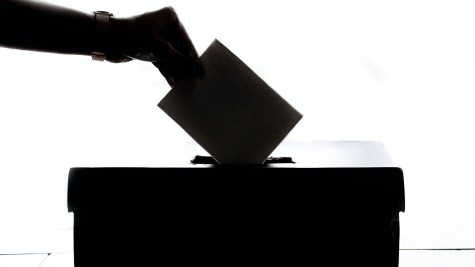At the Confluence of Restoration and Mobilization
Examining the Feedback Effects of Citizen Re-Enfranchisement and the Role of the State in Democratic Stewardship
The MIT Election Data and Science Lab helps highlight new research and interesting ideas in election science, including through research grants under our ongoing Learning from Elections program.
Our post today was written by Stephanie Puello, based on her ongoing research funded by this program. The information and opinions expressed in this column represent their own research, and do not necessarily represent the opinions of the MIT Election Lab or MIT.
This study will evaluate recently adopted voter restoration policies in four states: Delaware, Florida, Kentucky, and Wyoming.
Purpose and Goals for Study
The study will examine 1) how such policies affect and are interpreted by their beneficiaries, 2) the extent to which these policies influence neighborhood turnout rates, 3) the relationship between administrative and policy views among local election officials (LEOs) and their propensity to engage in voter mobilization efforts, and 4) how these mobilization efforts mediate constituent turnout. This study will test its propositions using a mixed-methods approach including interviews with policy beneficiaries, a survey of LEOs, and secondary voter file and corrections data.
The goals for this study include understanding the compounding factors that may play into whether a returning citizen is motivated and able to vote or engage civically after having their voting rights restored. It also aims to understand how citizens make sense of re-enfranchisement and their place in our body politic, and will help identify efforts that should complement voter restoration in terms of mobilization. Additionally, the study aims to understand how voting rights restoration influences the political participation rates among those living in the same spatial communities--to lend greater support to the need for other states to reconsider their disenfranchisement practices.
And lastly, I aim to understand how these policy changes affect LEOs and their workload and how their perceptions of these policies might affect their propensity to engage in voter mobilization (outreach and education) efforts. The goal here is to both understand constraints to mobilization as well as to highlight the need to consult LEOs concerning policy implementation, particularly with respect to feasibility.
Progress and Preliminary Findings
With all necessary data available so far for the state of Florida, I was able to estimate the effect of returning citizen population size on turnout in the general 2020 election. I measured this effect size at the Census tract level (N=4,965). Preliminary findings suggest that there is a negative, statistically significant correlation between the number of returning citizens living in a neighborhood and turnout, although the effect size is very small. Similarly, education attainment, unemployment rates, median age, and income all have statistically significant effects on turnout rates. These findings corroborate extant literature, such as the civic voluntarism model, that suggests these factors are the strongest predictors of voter turnout. These results are also not unexpected given that previous studies have similarly found that areas with high police activity, which usually overlap with areas of socioeconomic disadvantage, tend to report lower turnout rates.
In addition to this cross-sectional analysis, a panel data set will be composed to understand how turnout has changed overtime in elections spanning 2010 to 2020 (for each state). Once all data is collected, I will compare corresponding elections (i.e., midterms to midterms and general elections to general elections) in that time frame. This will allow us to also understand if there were considerable changes in neighborhood turnout rates before and after each voting rights restoration policy was adopted.
Next Steps
Interviews with returning citizens are ongoing through the spring and early summer. At this time, I have completed and transcribed five interviews (DE = 1, KY = 2, FL = 2). The goal for the research project is to complete 40 interviews with ten citizens from each state. I will continue to contact and build rapport with local organizations that support the re-entry of returning citizens and request that they share this opportunity with their members. I may also use social media to complement sampling efforts, but previous attempts have led to bots signing up for interview slots.
FOIA requests for corrections data have been rejected by Wyoming and Kentucky. Both states have rejected the requests citing that they were labor-intensive and/or time-consuming. I await a response for my FOIA request in Delaware. I am currently exploring other venues to find these data and would appreciate any leads!
Lastly, a survey instrument will be in the field this month (January 2022), which will be disseminated to all LEOs in the four sample states. The survey will ask about administrative environment and capacity, constituency demographics, training, voter mobilization efforts (i.e., education and outreach), and perceptions of administrative burden, policy efficacy, and democratic merit of respective voting rights restoration policies in their state.


